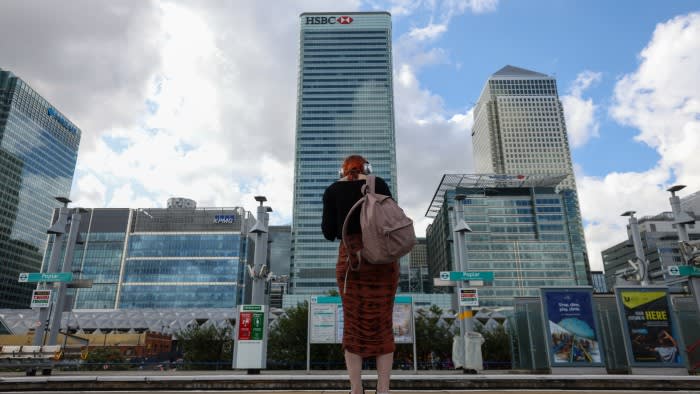Unlock the Editor’s Digest for free
Roula Khalaf, Editor of the FT, selects her favourite stories in this weekly newsletter.
HSBC’s new chief Georges Elhedery is engaging in a reshuffle. It could be the purposeful reshaping of a supertanker towards a promising new future — or it could be merely some drag-reducing furniture rearrangement. Either way it should raise questions about the bank’s broader direction of travel.
It is not hard to see why Elhedery may be looking to declutter his vessel. The bank, listed in both Hong Kong and London, is in a sweet spot: expenses consume just 50 per cent of its income, and it generated a 15 per cent return on tangible equity in 2023, where 10 per cent is the least shareholders tend to demand. Yet its seas can only get choppier.
Widely expected rate cuts are one menace. For every 100 basis points that interest rates decline, HSBC’s illustrative sensitivity analysis yields a $2.6bn cut from full-year net interest income.
Indeed, a Barclays analysis suggests that, should 2026 rates fall to 3 per cent, the bank will need to cut $1.4bn of costs to keep its returns on equity above 13 per cent. That’s a glum prospect for HSBC’s 214,000 employees. Gold-standard Singaporean competitor DBS is 50 per cent more profitable per employee, Barclays reckons.
Elhedery hasn’t put a number on what level of costs his rejig will save. HSBC’s unmoved share price on Tuesday suggests investors think not much. Yet there’s virtue in simplicity. The bank is unshackling its two home markets, Hong Kong and the UK, from any regional-and-product matrix and turning them into standalone full-service banks. That may make them sprightlier. Crunching together its investment banking and commercial lending businesses should help reduce some overlap.
What results, though, is still somewhat ungainly. The bank is headquartered in the UK despite making nearly three-fifths of its profits in Asia. Major shareholder Ping An, the Chinese insurer, has unsuccessfully pushed for the separation of its Asian business from the rest of its operations.
Putting UK and Hong Kong businesses in their own divisions, meanwhile, shows their lack of synergies with each other and the rest of the organisation. And a further split in the way the businesses are managed between ‘Eastern’ and ‘Western’ looks odd for a global bank. HSBC’s valuation reflects its uncomfortable straddle. Its shares trade at an undemanding valuation of 1.1 times tangible book — a premium compared to the beleaguered European banking sector, but a big discount to the largest US banks and DBS.
HSBC may insist that it is simply aligning its workforce with its strategy. For a new chief executive with something to prove, it’s helpful to make an entrance. But having changed what HSBC looks like, his next challenge is to be clearer about where it’s going.
camilla.palladino@ft.com
https://www.ft.com/content/d51ae204-639f-4b6c-b362-171e72144a02


